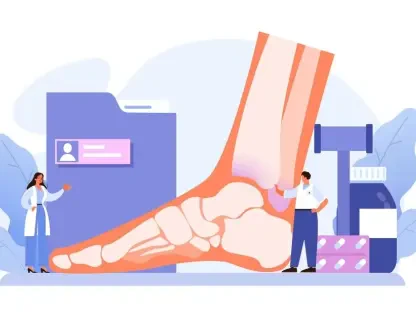I’m thrilled to sit down with Faisal Zain, a renowned healthcare expert with deep expertise in medical technology. With years of experience in the manufacturing of diagnostic and treatment devices, Faisal has been at the forefront of innovation in healthcare. Today, we’re diving into the exciting world of digital mental health tools, focusing on the transformative potential of AI-powered solutions like journaling features that support patient engagement between therapy sessions. Our conversation explores the motivations behind such innovations, the mechanics of how they work, the importance of patient autonomy, and the impact on both patients and therapists. Let’s get started!
How did the idea of integrating AI-powered journaling into mental health care come about, and what gaps in patient care were you aiming to address?
I think the core motivation was to bridge the gap between therapy sessions. Often, patients struggle to recall or articulate their thoughts and emotions during a session, especially if they’ve had a busy or overwhelming week. We saw an opportunity to use AI as a tool to help patients reflect in a structured way, making it easier for them to process their experiences and identify key issues they might want to discuss with their therapist. It’s about fostering that continuity of care and ensuring patients feel supported even outside the therapy room.
Can you walk us through how patients interact with an AI-powered journaling tool and what the experience feels like for them?
Absolutely. The process is designed to be intuitive and supportive. Patients are given tailored prompts to guide their writing, which helps make journaling feel less daunting. Once they’ve written their entry, the AI analyzes the content and pulls out key themes or patterns in a concise summary. Patients can review this summary, edit it if they feel it doesn’t capture their thoughts accurately, or even delete it if they’re not comfortable with it. The goal is to make reflection accessible and meaningful, without adding stress.
Why is it so crucial to ensure patients have full control over what they share with their therapists through tools like this?
Patient autonomy is at the heart of effective mental health care. When someone feels they have control over their personal reflections and data, they’re more likely to engage honestly and openly. We designed these tools so patients decide what to share with their provider, which builds trust. It’s not just about privacy—it’s about empowering them to steer their own therapeutic journey. We also put safeguards in place to protect their data, ensuring they feel safe using the platform.
What steps are being taken to ensure the AI-generated summaries are accurate and helpful for patients?
Quality is a top priority. We combine human oversight with automated AI evaluation to assess the summaries. Human reviewers provide feedback on how well the AI captures the essence of a patient’s entry, while the AI itself is programmed to self-evaluate and improve over time based on set criteria. This dual approach helps us refine the technology continuously, ensuring the summaries are not only accurate but also resonate with the patient’s intent and emotions.
In what ways does a tool like AI-powered journaling support therapists during their sessions with patients?
Therapists often face the challenge of maximizing limited session time. With AI-generated summaries, they can quickly grasp the key topics or emotional themes from a patient’s week without needing to read through lengthy journal entries. This allows them to dive straight into meaningful discussions, tailoring their approach based on what’s most pressing for the patient. From early feedback, therapists appreciate this focused insight—it helps them be more present and effective during sessions.
How does integrating such a feature into an existing platform benefit patients in terms of adoption and ease of use?
Familiarity plays a huge role in adoption. By embedding the journaling tool into a platform patients already use for other aspects of their care, we reduce the learning curve. They don’t need to download a new app or navigate an unfamiliar interface—it’s right there, seamlessly integrated into their routine. This lowers barriers to entry and encourages consistent use, which is critical for something like journaling to have a real impact on their mental health journey.
What has the initial feedback been like from both patients and therapists about this AI-powered journaling tool?
The response has been incredibly encouraging. Patients have shared that they feel more connected to their therapy process, as the tool helps them organize their thoughts and pinpoint what they want to discuss. Many appreciate the prompts and summaries as a way to make journaling less intimidating. Therapists, on the other hand, value the concise insights they receive—it gives them a head start in understanding their patient’s current state without overwhelming them with too much raw detail. It’s been a win-win so far.
How do you see the future of AI-driven tools like this shaping the landscape of mental health care over the next few years?
I believe we’re just scratching the surface. AI has the potential to personalize mental health support in ways we’ve never seen before, whether it’s through more adaptive journaling prompts, real-time emotional tracking, or even predicting when a patient might need extra support. The focus will always be on enhancing human connection—AI isn’t a replacement for therapists but a tool to amplify their impact. I foresee a future where these technologies become even more integrated into everyday care, making mental health support more accessible, proactive, and tailored to individual needs.









